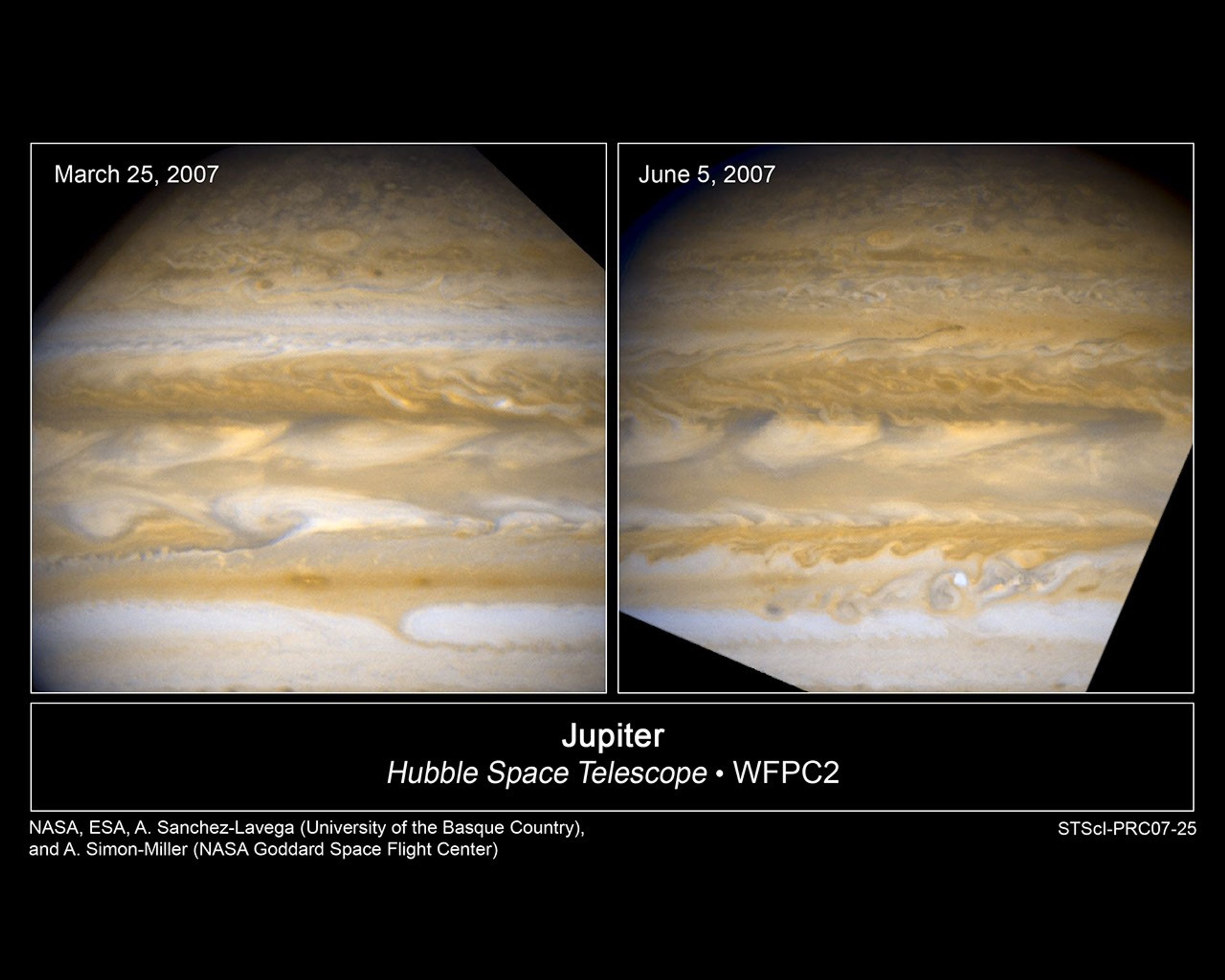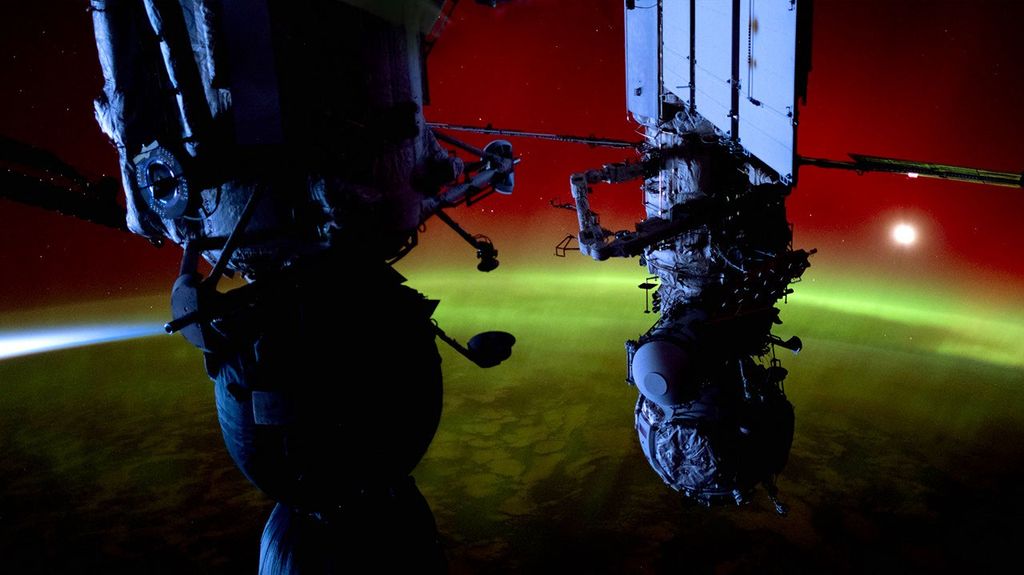1 min read
Hubble Catches Jupiter Changing Its Stripes

Massive Jupiter is undergoing dramatic atmospheric changes that have never been seen before with the keen "eye" of NASA's Hubble Space Telescope.
Jupiter's turbulent clouds are always changing as they encounter atmospheric disturbances while sweeping around the planet at hundreds of miles per hour. But these Hubble images reveal a rapid transformation in the shape and color of Jupiter's clouds near the equator, marking an entire face of the globe.
The planet is wrapped in bands of yellows, browns, and whites. These bands are produced by the atmosphere flowing in different directions at various latitudes. Lighter-hued areas where the atmosphere rises are called zones. Darker regions where the atmosphere falls are called belts. When these opposing flows interact, storms and turbulence appear.
Between March 25 and June 5, Hubble's Wide Field and Planetary Camera 2 captured entire bands of clouds changing color. Zones have darkened into belts and belts have lightened and transformed into zones. Cloud features have rapidly altered in shape and size.
The image at left shows a thin band of white clouds above Jupiter's equator. The white color indicates clouds at higher altitudes in Jupiter's atmosphere. In the image at right, the band's white hue has turned brown, showing clouds deep within the planet's atmosphere. The whole band appears to have merged with the one below it.
In the same cloud band above the equator, the small swirls in the left-hand image have morphed into larger wave-like features in the right-hand photo. Dominating the band is a dark streak that resembles a snake. This serpent-shaped structure is actually a small tear in the cloud deck, which gives astronomers a view deep within the atmosphere.
Below the equatorial region, the brownish upside-down shark fin in the left-hand image disappears in the photo at right. Appearing instead are brownish tongue-shaped clouds with a stream of white swirls below them.
These global upheavals have been seen before, but not with Hubble's sharp resolution. Astronomers using ground-based telescopes first spied drastic atmospheric transformation in the 1980s. Another major disturbance was seen in the early 1990s, after Hubble was launched into space. The telescope, however, did not have the resolution to view the upheaval in fine detail. These higher-quality Hubble images may help astronomers understand how such global upheavals develop on Jupiter.
About the Object
- DistanceDistanceThe physical distance from Earth to the astronomical object. Distances within our solar system are usually measured in Astronomical Units (AU). Distances between stars are usually measured in light-years. Interstellar distances can also be measured in parsecs.The semi-major axis of Jupiter's orbit about the sun is 5.2 Astronomical Units (778 million km or 483 million miles).
- DimensionsDimensionsThe physical size of the object or the apparent angle it subtends on the sky.The planet has a diameter of roughly 88,789 miles (142,984 km) at the equator.
About the Data
- Data DescriptionData DescriptionProposal: A description of the observations, their scientific justification, and the links to the data available in the science archive.
Science Team: The astronomers who planned the observations and analyzed the data. "PI" refers to the Principal Investigator.Proposal 11096: K. Noll (STScI), H. Weaver (Johns Hopkins University/Applied Physics Laboratory), A. Simon-Miller (NASA Goddard Space Flight Center), M. Mutchler, H. Bond, C. Christian, Z. Levay, L. Frattare, F. Hamilton, W. Januszewski, and T. Roman (STScI), J. Clarke Boston University), and J. Spencer (Southwest Research Institute) Proposal 11310: A. Sanchez-Lavega, S. Perez-Hoyos, R. Hueso (University of the Basque Country), E. Garcia-Melendo (Institute for Space Studies of Catalonia, Spain), G. Orton (Jet Propulsion Laboratory), and A. Simon-Miller (NASA Goddard Space Flight Center) - InstrumentInstrumentThe science instrument used to produce the data.HST>WFPC2
- Exposure DatesExposure DatesThe date(s) that the telescope made its observations and the total exposure time.March 25, 2007 (left) and June 5, 2007 (right)
- Object NameObject NameA name or catalog number that astronomers use to identify an astronomical object.Jupiter
- Object DescriptionObject DescriptionThe type of astronomical object.Planet
- Release DateJune 28, 2007
- Science ReleaseHubble Catches Jupiter Changing Its Stripes
- Credit

Share
Details
Claire Andreoli
NASA’s Goddard Space Flight Center
Greenbelt, Maryland
claire.andreoli@nasa.gov



































